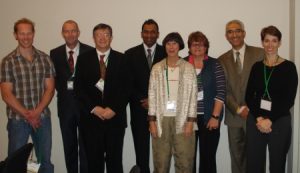Acupuncture and Dry Needling by Australian Physiotherapists, 2016
https://healthtimes.com.au/hub/physiotherapy/8/practice/lmc/acupuncture-and-dry-needling-by-australian-physiotherapists/1598/
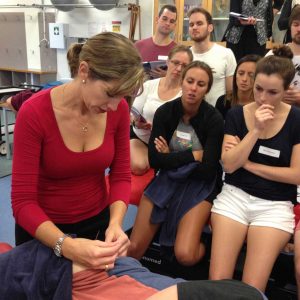
The use of Acupuncture and Dry Needling by physiotherapists has progressively grown over the past decade or two coinciding with an increasing swell in the evidence base to support using the various needling therapies utilised by Australian Physiotherapists.
Physiotherapists can be trained to use Dry Needling, Western Acupuncture and/or Traditional Acupuncture. Dry Needling involves needling to altered or dysfunctional tissues in order to improve or restore function. This may include needling of myofascial trigger points and periosteum. Western acupuncture utilises needling meridian and trigger points but applies it to ‘western’ reasoning with particular consideration to relevant neurophysiology and anatomy. In Western acupuncture points are stimulated to create local, spinal segmental or supraspinal pain modulated effects. Even though traditional acupuncture points are used with this style of needling Western Acupuncture is not viewed as Traditional Chinese Medicine (TCM) as no paradigms or traditional assessment methods are adopted from TCM. Traditional Acupuncture utilises meridian or other traditional points based on a Traditional Chinese Medicine approach which includes diagnosis and clinical reasoning using various Chinese medicine assessment methods and treatment paradigms.
As contemporary physiotherapists possess entry level degrees, spanning an average of four or five years, which have already included training in anatomy, neurology, pathophysiology and disease diagnosis, needling therapies are viewed as extended training. The minimum standard to commence needling by a registered physiotherapist in Australia is 16 hours of training, including competency based learning assessments and practical examinations. Traditional acupuncture at an introductory level takes considerably longer and is usually taught over a prolonged period of several months and will also include competency based assessments. All physiotherapists must meet these minimum standards to be covered by their professional income insurance.
Evidence based medicine is paramount when considering patient care. In the area of migraine and tension type headaches (TTHA) acupuncture has been shown to reduce the frequency and intensity of migraine and TTHA attacks. Acupuncture and dry needling reports positive reductions in pain and improved functional outcomes in the treatment of chronic neck pain, radicular arm pain, acute and chronic lower back pain and in particular for sub-acute and chronic Whiplash Associated Disorder (WAD). Pelvic girdle pain has been specifically researched in Europe and the latest European Guidelines recommend the use of acupuncture along with pelvic support belts and stabilising exercises.
In the shoulder region acupuncture and dry needling is supported for treatment of rotator cuff dysfunction and impingement and supraspinatus tendinopathy. Systematic review supports the use of acupuncture in all stages of frozen shoulder (adhesive capsulitis) to reduce pain and in the second and third stages needling therapies are supported to be used with multimodal treatment which include specific exercises and mobilisations. Good evidence also exists in the area of tennis elbow (lateral epicondylalgia), OA knee pain and more recently evidence has emerged for the conditions of plantarfasciitis and chronic ankle instability. In the last five years high-quality research has been published regarding jaw pain (Temporo Mandibular Disorder) with positive effects of decreased pain, and improved mouth opening and function being detected. Tendinopathy and fibromyalgia are distinct conditions that now have systematic support in dry needling and acupuncture respectively.
In the area of women’s health, acupuncture has been shown to be effective for reducing pain in dysmenorrhea, polycystic ovarian disease and endometriosis. For pain reduction in cancer, acupuncture has been shown to be effective if combined with drug therapy, whilst surprisingly TENs machine use has inconsistent results. Neurology is another area which has had a marked increase in acupuncture RCTS in the last five or so years. Conditions such as stroke (in particular shoulder pain post stroke), Multiple Sclerosis, Motor Neurone Disease, Bell’s Palsy and Parkinson’s disease all have emerging scientific evidence with a mixed level of support.
In the area of sports physiotherapy acupuncture and dry needling is now commonly utilised. Along with treating injuries, it may also be used in conjunction with sports screening to enhance functional ability and research has shown that dry needling of trigger points increases synergistic muscle activity.
Physiotherapists should be aware that along with the Australian Health Guidelines, the Acupuncture Society of Australian Physiotherapists have specifically developed guidelines for physiotherapists using needling therapies and these can be accessed at https://combinedhealth.com.au/dryneedling/safety_guidelines. Additionally the Australian Physiotherapy Association has an active Acupuncture and Dry Needling Group and biannual Conferences are held at various locations around Australia.
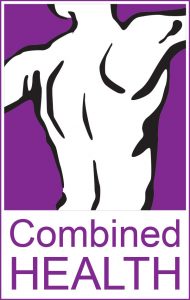
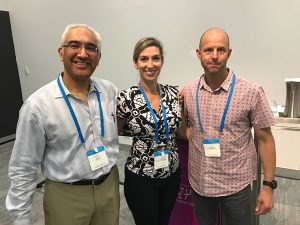 This year Leigh McCutcheon was invited to present as a key note speaker for the APA Acupuncture and Dry Needing Conference along with Jay Shah from Washington and Jorgen Forsberg from Australia. Leigh presented a pre conference workshop on Whiplash which covered a literature review outlining the multimodal treatment approach for Whiplash Associated Disorder and included the role of acupuncture and dry needling. Objective assessments for musculoskeletal, sensorimotor control, cervico-occular control and postural stability and a practical overview of treatment techniques in relation to needling therapies were considered as well as Third Party/ Workcover and legal considerations.
This year Leigh McCutcheon was invited to present as a key note speaker for the APA Acupuncture and Dry Needing Conference along with Jay Shah from Washington and Jorgen Forsberg from Australia. Leigh presented a pre conference workshop on Whiplash which covered a literature review outlining the multimodal treatment approach for Whiplash Associated Disorder and included the role of acupuncture and dry needling. Objective assessments for musculoskeletal, sensorimotor control, cervico-occular control and postural stability and a practical overview of treatment techniques in relation to needling therapies were considered as well as Third Party/ Workcover and legal considerations.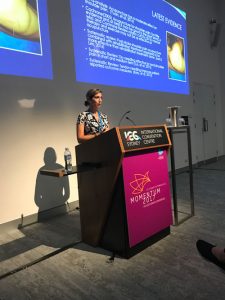 Within the Acupuncture and Dry Needling program of the APA conference Leigh also presented a literature review of acupuncture and dry needling treatment as a treatment modality for shoulder conditions. A practical demonstration addressed some the complexities associated with needling in the shoulder region. Safety and precautions relevant to needling in the shoulder and the associated thoracic region were addressed and current medical misadventure literature was reviewed.
Within the Acupuncture and Dry Needling program of the APA conference Leigh also presented a literature review of acupuncture and dry needling treatment as a treatment modality for shoulder conditions. A practical demonstration addressed some the complexities associated with needling in the shoulder region. Safety and precautions relevant to needling in the shoulder and the associated thoracic region were addressed and current medical misadventure literature was reviewed.
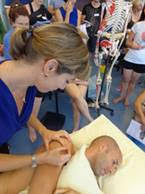 The ADNG conference will be held along with the Sports Physiotherapy Conference and the Musculoskeletal Physiotherapy Conference in October 2015 on the Gold Coast.
The ADNG conference will be held along with the Sports Physiotherapy Conference and the Musculoskeletal Physiotherapy Conference in October 2015 on the Gold Coast.